|
|
Post by othercircles on Aug 2, 2005 21:47:12 GMT
Ray Manzarak got himself a Vox Continental when the doors got their first recording contract with Coulumbia records. The contract never went anywhere for them but Ray got a free keyboard that shaped the early doors sound and was still used here and there in later years. VOX CONTINENTAL 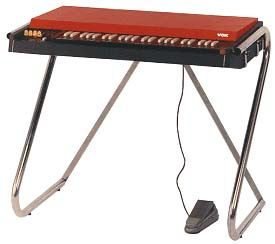 The "Drawbar" This bars are pulled towards the player or pushed back in. Each one has a different sound and you can create whatever sound you like by combining certain level of each of these. 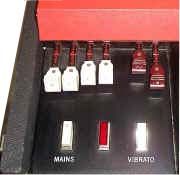 Sometime in 67 or 68 Ray changed to a GibsonG101 for live performances and some studio work. Allegedly because the plastic keys on the vox broke. GIBSON G101 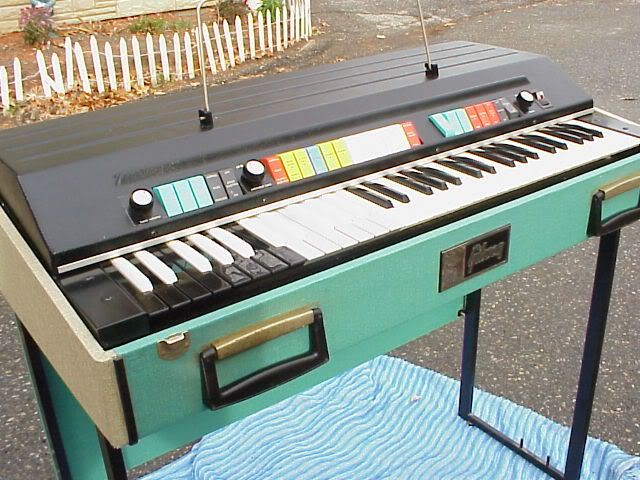 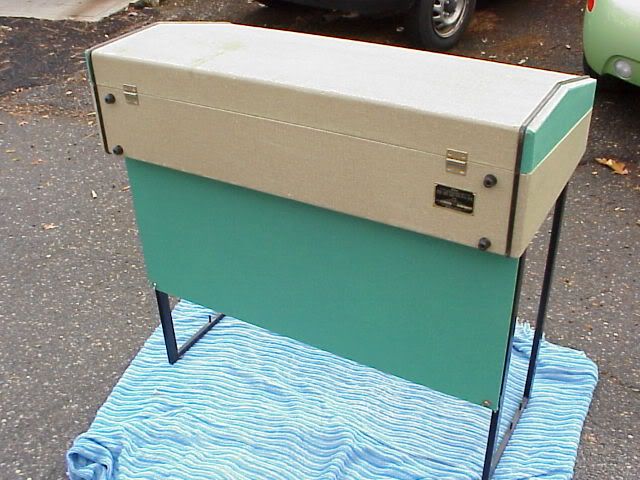 |
|
|
|
Post by ensenada on Aug 2, 2005 21:50:03 GMT
damn! i thought this thread said "ray manzarek's wig"  however its cool to see the keyboard he used..or the same. the gibson looks a bit more equiped. what was the keyboard he used for base then? he must have stuck that on top of the vox or gibson, right? |
|
|
|
Post by othercircles on Aug 2, 2005 21:53:13 GMT
That would be the Fender Roads. It just had one volume knob if I recall.Fender Rhodes Stage Piano Mark I - History and Price Guide
By Julian Colbeck
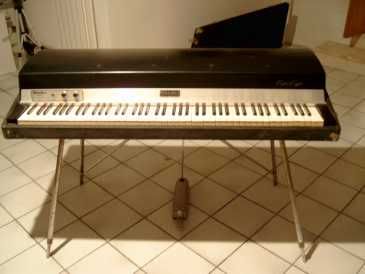
The Fender Rhodes electric piano possesses one of the most recognizable sounds in modern music. The Rhodes' popularity has waxed and waned over the decades since its introduction, but its sound is still in vogue today in Beck's rock, Brand New Heavies' funk, Chick Corea's jazz, and even in Emagic's EVP88 and EVP73 virtual electric-piano plug-ins.
The Rhodes piano was the brainchild of musician Harold Rhodes. While a flying instructor stationed in Greensboro, North Carolina, Rhodes designed his first portable acoustic piano for the U.S. Army Air Corps in 1942. Beginning with a pile of aluminum tubing salvaged from a B-17 bomber, Rhodes fashioned a sort of xylophone with a 29-note keyboard. Following World War II, Rhodes built a self-amplified, 38-note electric model called the Pre-Piano after taking apart a chiming clock that used spun-metal rods called tines.
At the 1959 NAMM convention, Rhodes introduced the Piano Bass, which was later enthusiastically embraced by Ray Manzarek of the Doors. Of all the models to emerge over the years, however, perhaps the best known and most desirable is the 73-key Fender Rhodes Stage Piano Mark I.
Introduced in 1970, the 132-pound Mark I is made of wood, covered in a fabric-reinforced vinyl called Tolex, and sized to fit into a box that measures 45.25 by 9.85 by 23.63 inches. A compartment in the top cover houses four telescoping tubular steel legs that screw into the instrument's underside at a splayed angle for sturdy setup. A long metal sustain pedal attaches to the keyboard mechanism through a small hole in the center of the piano's underside via interlocking rods. Unfortunately, the pedal arrangement has always been difficult to fit and invariably slackens or falls out in the middle of a gig.
The original Stage Piano's control panel is sparse, with a volume knob, a tone knob, and a stereo ¼-inch TRS output jack. The Mark I's Bass Boost is a passive tone control, though some of the later models offer active tone control. The curved, sloping lid makes it impossible to stand your beer, sheet music, or another instrument on top without the framelike contraption that was seen occasionally in the 1970s.
The Mark I was manufactured in 73- and 88-key models. On the early Mark Is, the hammers were made of felt-covered wood; they were replaced on later models by rubber-covered plastic. Sound is generated when the key action causes the hammers to strike the tines. Audible vibrations are picked up by a system of individual magnets positioned close to the tip of each tine.
With keys that are slightly shorter and narrower than standard piano keys, a typical Rhodes piano began life with a wrist-breakingly stiff action. The weighted keys usually took months to loosen up and settle down; most became knackered — a term commonly used among Rhodes players — in their first year or so. Accordingly, no two instruments feel or sound quite the same. Some are a pleasure to play, and others are simply murderous.
The classic Rhodes sound is highly expressive — part bell, part xylophone, and part piano. With its relatively soft, muted tones and brilliant dynamics, the Rhodes piano is especially well suited to the subtleties of jazz. Hitting a note really hard produces anything from a harmonic or a dull thwack to a clear, loud, crystalline tone.
Two hardware pieces that greatly influence the Rhodes sound are the amplifier and the effects processor through which the piano is played. Shortly after the Mark I's introduction, the Fender Twin Reverb established itself as the amplifier of choice, in part because of its appropriately moody tremolo. The Roland JC-120 Jazz Chorus is also an excellent choice for amplification, especially with its creamy built-in chorus effect. Before the JC-120, players had to rely on chorus and phaser pedals that were notoriously noisy and ate batteries for breakfast. Still, if you want the authentic feel of the '70s, you may opt to take the stompbox route.
Rhodes pianos were produced in large quantities, and they're still in plentiful supply. Bargains abound, and with a little patience and skill, you can perform most repairs yourself. If you want to hear, see, and feel how musical instruments were before digitization made everything virtual, a Rhodes presents the lesson perfectly.
Before you purchase a Rhodes, give it an aural and a physical examination. Keyboard action is a matter of personal taste, but an action that's too loose is probably on its way out. Don't be overly concerned with the evenness of the tone or the loudness of individual notes; both are easy to correct by adjusting the angle or distance between the tine and the pickup. You should be aware that during the late '70s, then-owner CBS substituted some of the original construction materials, resulting in an instrument with a tone that Harold Rhodes considered inferior to earlier and later models.
With the exception of the tines, which break frequently, the Rhodes is fairly maintenance free. Fitting and replacing tines is laborious rather than difficult and requires nothing more than a screwdriver, a pair of pliers, reasonably good eyes and ears, and a steady hand. Each tine is cut to an approximate length and then fine-tuned by scraping tuning springs along its length.
You can obtain replacement parts from a huge variety of sources, and third-party modifications have always been available. From the mid-'70s until the mid-'80s, the most popular mod was Chuck Monte's Dyno-My-Piano, which employed mechanical and electronic makeovers to make the Rhodes sound even brighter and more bell-like.
Plenty of resources are available on the Web, but nothing comes close to the Rhodes Super Site (www.fenderrhodes.org). There you'll find online versions of the original brochures, user guides, and service manuals for various models, as well as fascinating historical information, FAQs, classified ads, and a lengthy list of repair facilities.
Although the Fender Rhodes itself has gone in and out of fashion, digital emulations of its sound have remained popular since the age of the Yamaha DX7, which for many players provided a most effective substitute. During the late '80s, when the Rhodes piano reached the height of unfashionability, I abandoned mine beneath a friend's house.
Harold Rhodes died on December 17, 2000. He was much more than an idiosyncratic keyboard inventor, but he remained fiercely proud of his robust family of electric pianos, and with good reason. The Fender Rhodes piano is assured a place in musical history, and it remains a viable force in today's music. Go play one and you'll discover why.
|
|
|
|
Post by othercircles on Aug 2, 2005 22:09:41 GMT
A big reason ray got gibson.. not only because of the vox keys breaking.. also vox underwent some legal stuff and suffice it to say... it was not practical to own a vox. You couldnt get it serviced easily.. and stuff did break.
He needed a flat keyboard that he could place the Rhoads ontop of and the Gibson101 fit the bill. It was just luck that it happened to sound fantastic! :-)
The gibson also had a little wobbly pitch thing like you hear on "Not To Touch The Earth". It's said that Jac Holzman wiggled the virato thing while Ray played it.
|
|
|
|
Post by TheWallsScreamedPoetry on Aug 2, 2005 22:36:09 GMT
The Gibson looks like something you might find in front of Mr Sulu on the bridge of the starship Enterprise....  |
|
|
|
Post by othercircles on Aug 3, 2005 0:17:09 GMT
Warp six mister sulu...... and play "Back Door Man"
|
|
|
|
Post by TheWallsScreamedPoetry on Aug 3, 2005 9:06:49 GMT
Warp six mister sulu...... and play "Back Door Man" 'Hey Hey we're The Monkees'........'Captain!'....  |
|
|
|
Post by ensenada on Aug 3, 2005 17:21:54 GMT
Warp six mister sulu...... and play "Back Door Man" 'Hey Hey we're The Monkees'........'Captain!'....  funny as fook!   hey you think jac liked to wiggle ray's vibrato thingy!?  |
|
|
|
Post by othercircles on Aug 4, 2005 23:06:16 GMT
I bet lol
|
|
|
|
Post by othercircles on May 3, 2006 19:03:13 GMT
In the later years Ray began using other keyboards more. A Fender Rhoads Electric Piano (not to be confused with the Rhoads Piano Bass) One can hear its use on tracks such as "Riders On The Storm" "In The Eye Of The Sun" and "Ships With Sails" 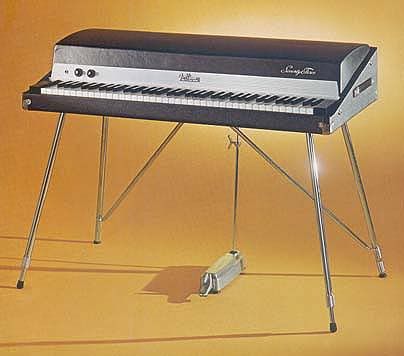 Fender Rhodes Stage Piano Mark I Fender Rhodes Stage Piano Mark IAlso in the same period (71 onward) he made avid use of a hammond organ... also heard on "Ships With Sails" the one that does all those big chords where it builds and build... its heavily featured on "Verdillac" as well. I believe thats one on "The Changling" too.  Both of these instruments were utilized live in the post morrison years. 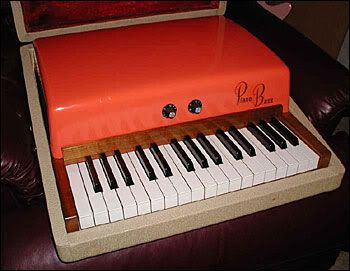 Fender Rhoads Piano Bass |
|
|
|
Post by othercircles on May 30, 2006 1:17:39 GMT
I should also mention.. that around 69 ray started using the vox continental again for gigs a bit. It can be seen being used exclusively on the PBS critique show.  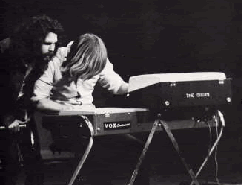 |
|
|
|
Post by TheWallsScreamedPoetry on May 7, 2011 10:59:00 GMT
The Doors Equipment
Musician Magazine
August 1981Ray Manzarek: "I started out with a Vox Continental organ, like all the English groups used, It was flat on top so I could put the Fender Rhodes Piano bass right on top Of it. The bass would be up on the left, so I'd play the organ with my right hand. That's how I did the first album, before we brought in a studio bass player. Then I overdubbed some acoustic piano, I think it was either a Yamaha or a Baldwin. 'Crystal Ship' was acoustic piano and organ. The second album was done the same way. except we added a Hohner Clavinet and a harpsichord played through a Baldwin amp, which was wonderful. We started on with Sears Silvertone amps, which were actually very good. Then we went on to Fender and Acoustic stuff. We used Fender amps in the studio, and the band bought me a Hammond B-3 organ for my birthday, and I used that on L.A. Woman a lot. That tinkly sound on Riders On The Storm' was a Fender Rhodes electric piano. I also used a Wurlitzer - a funky little piano - that's on Morrison Hotel. 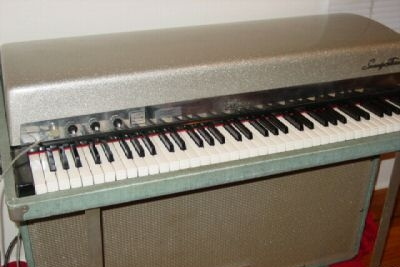 Fender Rhodes electric piano Fender Rhodes electric pianoI didn't use any synthesizers myself. We brought in the late Paul Beaver, a real genius, to put some things on Strange Days. 'Horse Latitudes' may have been the first time a synthesizer was used in rock 'n' roll, I'm not sure. On the first album I played bass on the Rhodes Piano Bass, but it didn't have the punch, the attack, of something hitting a string. It was fine in concert, 'cause it would move a lot of air and carried a deep bottom to it."  Hohner Clavinet Hohner Clavinet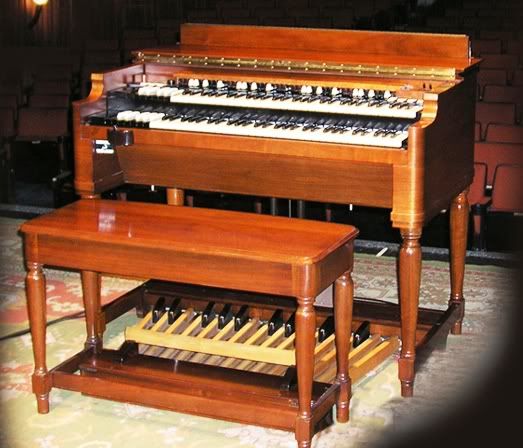 "The band bought me a Hammond B-3 organ for my birthday" "The band bought me a Hammond B-3 organ for my birthday"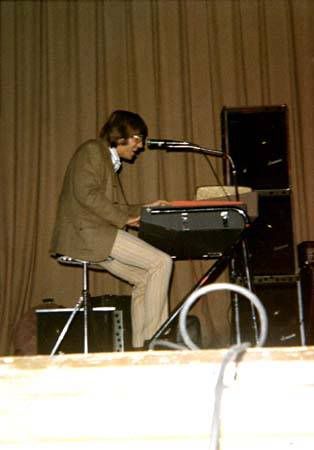 good shot of Ray's rig at Asbury Park in 1967 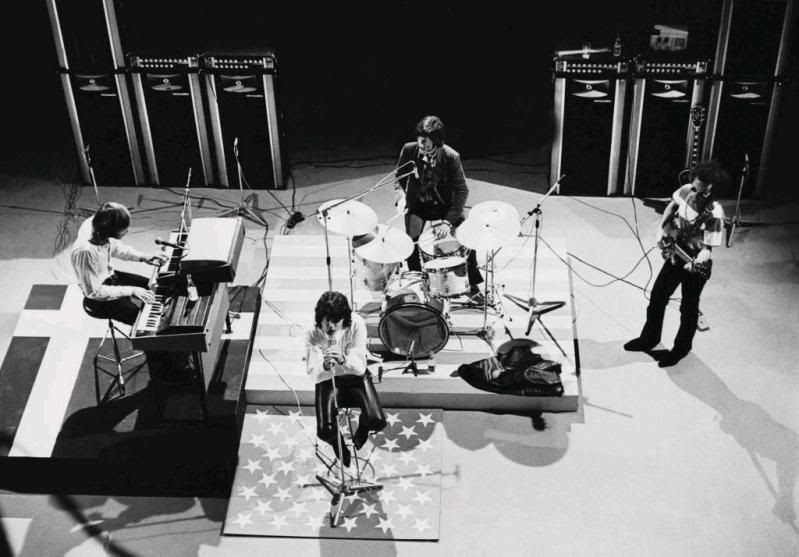 Good ariel shot of Ray in Denmark in 1968. 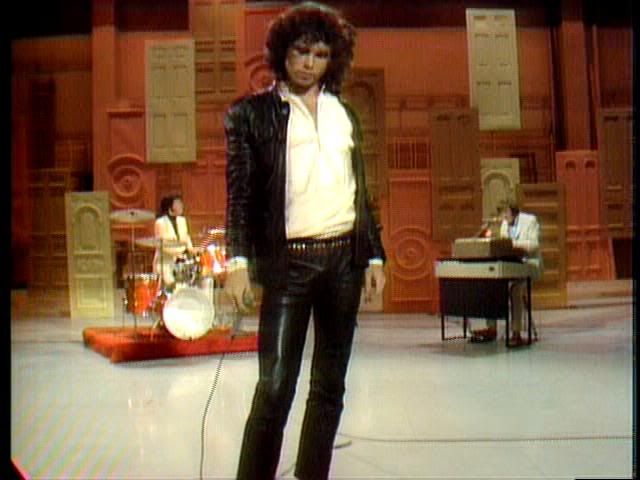 The fender bass in action on Ed Sullivan in 1967. 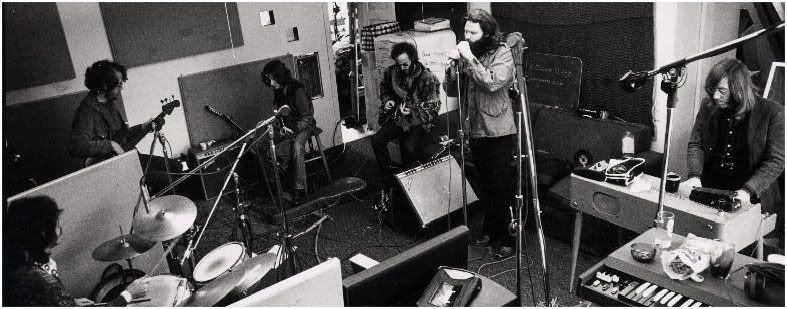 Ray's LA Woman set up.  Good shot of Ray from behind
|
|
|
|
Post by TheWallsScreamedPoetry on May 8, 2011 11:15:04 GMT
Then I overdubbed some acoustic piano, I think it was either a Yamaha or a Baldwin. 'Crystal Ship' was acoustic piano and organ.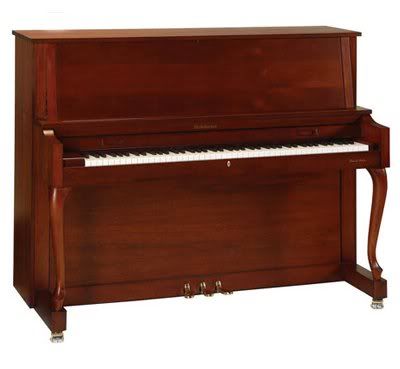 The Baldwin B247 was their biggest seller since it's introduction in 1939. The year Ray was born. This piano would have been easily available to Ray in 1967 onwards. 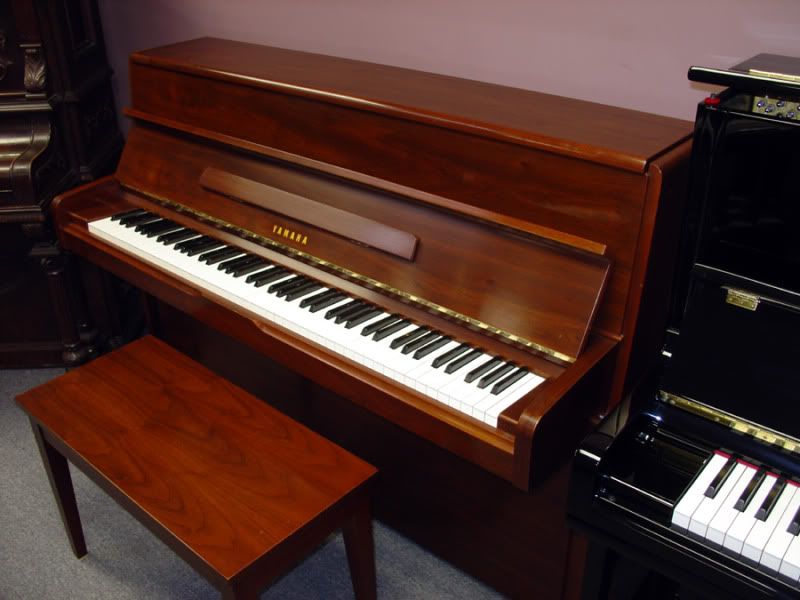 The Yamaha M1S was the most popular of it's type during the 60s and also would have been readily available for Ray Manzarek.  Colour shot of Ray's Vox in action during the PBS special in 1969. Also good view of John's Mod Orange drun kit.
|
|
|
|
Post by TheWallsScreamedPoetry on Nov 19, 2011 10:51:00 GMT
A Doors songbook for piano. 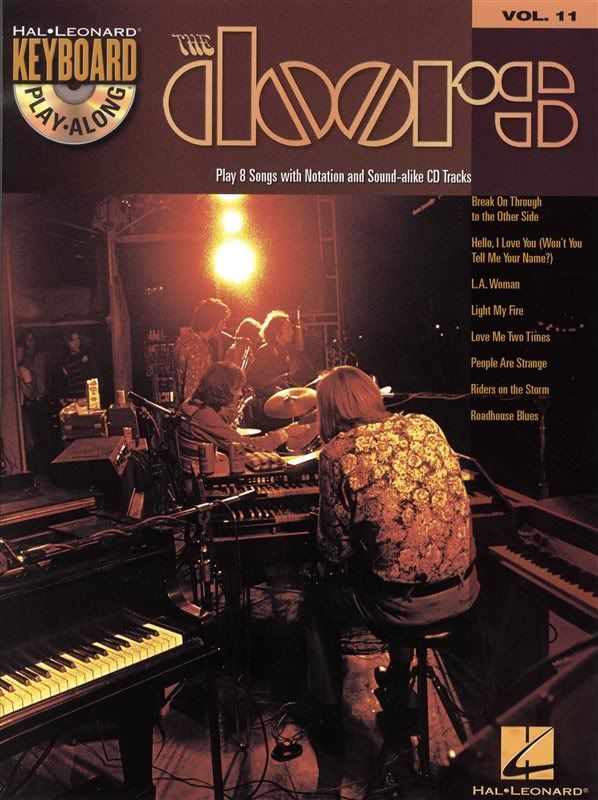 This photo on the cover is of a great deal of interest. It shows Ray's set up from the Mark II Doors era of Fender Rhodes stage piano on Ray's right, a Yamaha/Baldwin piano to his left and him playing what looks like a Hammond organ, possibly the B3 Robby and John got him for his birthday. It can be noticed that the band have a sax player present. This means it must be the 1972 Full Circle tour as the sax player must be Charles Lloyd who joined them from time to time on flute and sax. The band used to incorporate a sax solo into LMF. Most likley The Schaefer Music Festival in 1972 in New York's Central Park as if you look at the pix of that gig Ray and Robby are wearing the same clothes.  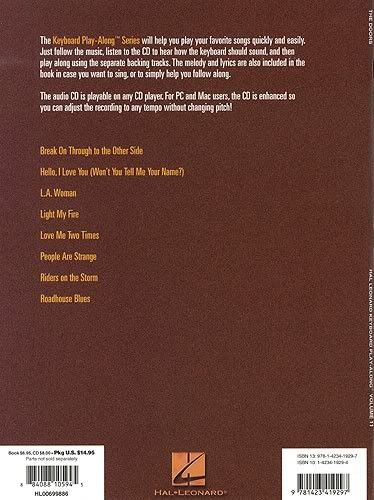 |
|
|
|
Post by TheWallsScreamedPoetry on Dec 6, 2011 17:03:52 GMT
 From the LA Woman booklet another good shot of how Ray set up his rig for a recording session. Ray could be playing a Gibson G101. What looks like the Fender Rhodes Piano is to the left and a Hammond organ just in front of him. |
|
|
|
Post by TheWallsScreamedPoetry on Dec 6, 2011 20:04:18 GMT
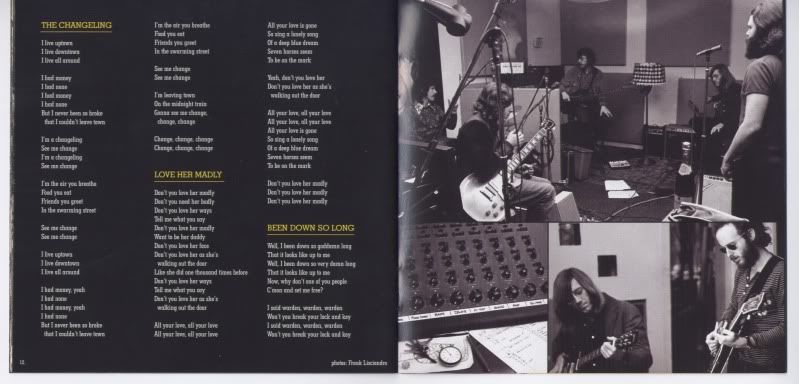 Playing guitar during Been Down So Long during LAW. 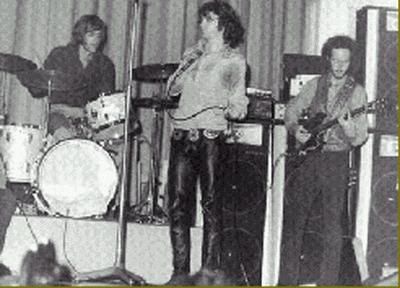 Playing drums Frankfurt 2nd set soundcheck. 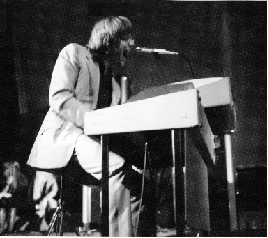 Filling in for Jim Amsterdam 1968 It's interesting as Ray seemed like a one man Doors. He could play guitar, drums and could fill in for Morrison if needed. |
|